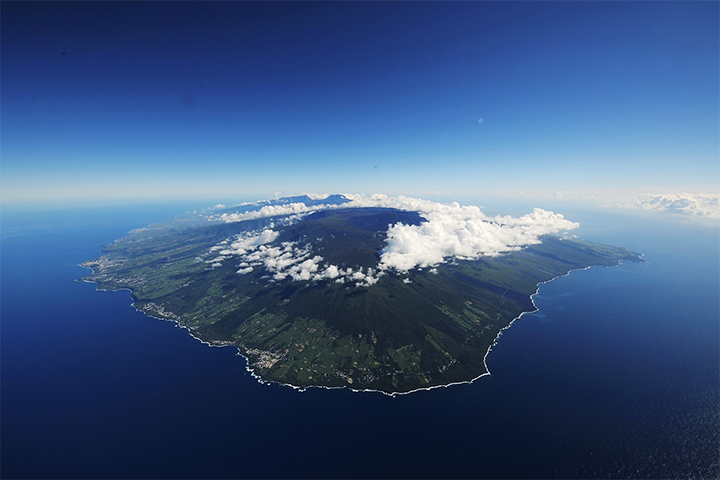Reunion Island; Credit: Serge Gelabert
La Reunion – a volcanic island in the middle of the Indian Ocean – boasts an impressive array of cultures comprising its population. Rich diversity, a result of a fascinating history involving the introduction of people of African, European and Asian origin, has borne a melting pot of traditions and culinary styles. Of course, French is the national language, but the local language is Creole, which is derived mainly from French and includes terms from Malagasy, Hindi, Portuguese, Gujarti and Tamil.
A department of France itself, locals enjoy full French citizenship, and French culture forms the basis of all sub-cultures on the island. St Denis, the administrative capital of this French overseas region, is located at the island’s northernmost point, and is the most densely populated metropolitan area on Reunion.
Offering a slice of France, a mere 4-hour flight from Johannesburg, St Denis’ main intersection, Rue du Maréchal-Leclerc intersects and Rue de Paris. This area is known as the island’s shopping district, with typical French bakeries dotted between museums and historical buildings. Giving credence to the multi-cultural nature of the region, these streets and their surrounds are also home to a mosque, the Shri Kali Kovil Tamil Temple and a Chinese Pagoda.

Town Hall, St Denis, Reunion Island; Credit: Emmannuel Virin
The festive season is an important time of year across all Reunionese groups. To start, families gather on Christmas Eve (in Reunion, the bulk of celebrations take place on Christmas Eve.) Those in charge of preparing the food will prepare snacks like pistachios, olives, spring rolls, samosas and achards (a Reunion-style salad), these are served throughout the evening.

Reunionese Samosas; Credit: Emmannuel Virin
Starters are served relatively late in the evening – as gratins make their way to the table. A traditionally French dish, gratin is a culinary technique in which an ingredient is topped with a browned crust, often using breadcrumbs, cheese, egg or butter. Most South Africans are familiar with “potato bake”, which is a form of gratin. Reunionese versions, however, are often a base of pumpkin or “chouchou” (alternatively known as chayote, a squash-like vegetable versatile in application and used heavily in Reunionese cuisine.) “Chouchou” is also an affectionate French nickname, usually given to a person who is special to you.

Chouchou Gratin; Credit: Lionel Ghighi
Mains are served with a base of rice or beans, topped with shrimp or chicken… Not forgetting vanilla duck cari, a festive favourite. Cari, not curry, is a stewed meat dish, featuring a generous helping of spices originating from India and Africa, often accompanied by steamed dumplings. Home-made cocktails like mango punch and rum make the rounds as the evening progresses.
In addition to Piton de la Fournaise – one of the world’s most active volcanos – sugarcane fields form an integral part of Reunion’s landscape, and the industry, second to tourism, is a primary source of export income. With sugarcane, comes rum… and interestingly, France produces a variety of rums, with distilleries located mostly in French overseas departments such as La Reunion, Guadeloupe and French Guiana. Rum is produced in one of two ways – distillation of sugar cane juice for agricultural rum, and the same of fermented molasses to produce industrial rum. Storage in oak barrels results in gold rum, or white rum if stored in stainless steel containers.
Several distilleries remain operational on Reunion Island, Rhum Charrette being the most well-known brand. Rum is consumed in a number of ways – mixed into punch, Daiquiries, Pina Coladas and the like, or made into “Rhum Arrangé”, a local concoction involving the mixture of fruits, plants, spices and herbs, which is left to soak in rum until ready for consumption.

Reunionese Rum; Credit: Jerome Martino
Music is an important element of every gathering. At the beginning of festive celebrations, and with a high energy rhythm, the traditional genre of Sega gets everyone in the party mood. After the main course, choice of music often veers towards Maloya, traditional music often danced to, and said to communicate with ancestors. After dinner, the countdown to midnight begins (similar to New Year’s Eve)… Celebrations, kisses and well wishes ensue as the clock strikes 12. Fireworks are often set off by locals.
Written by Nick Orsmond


